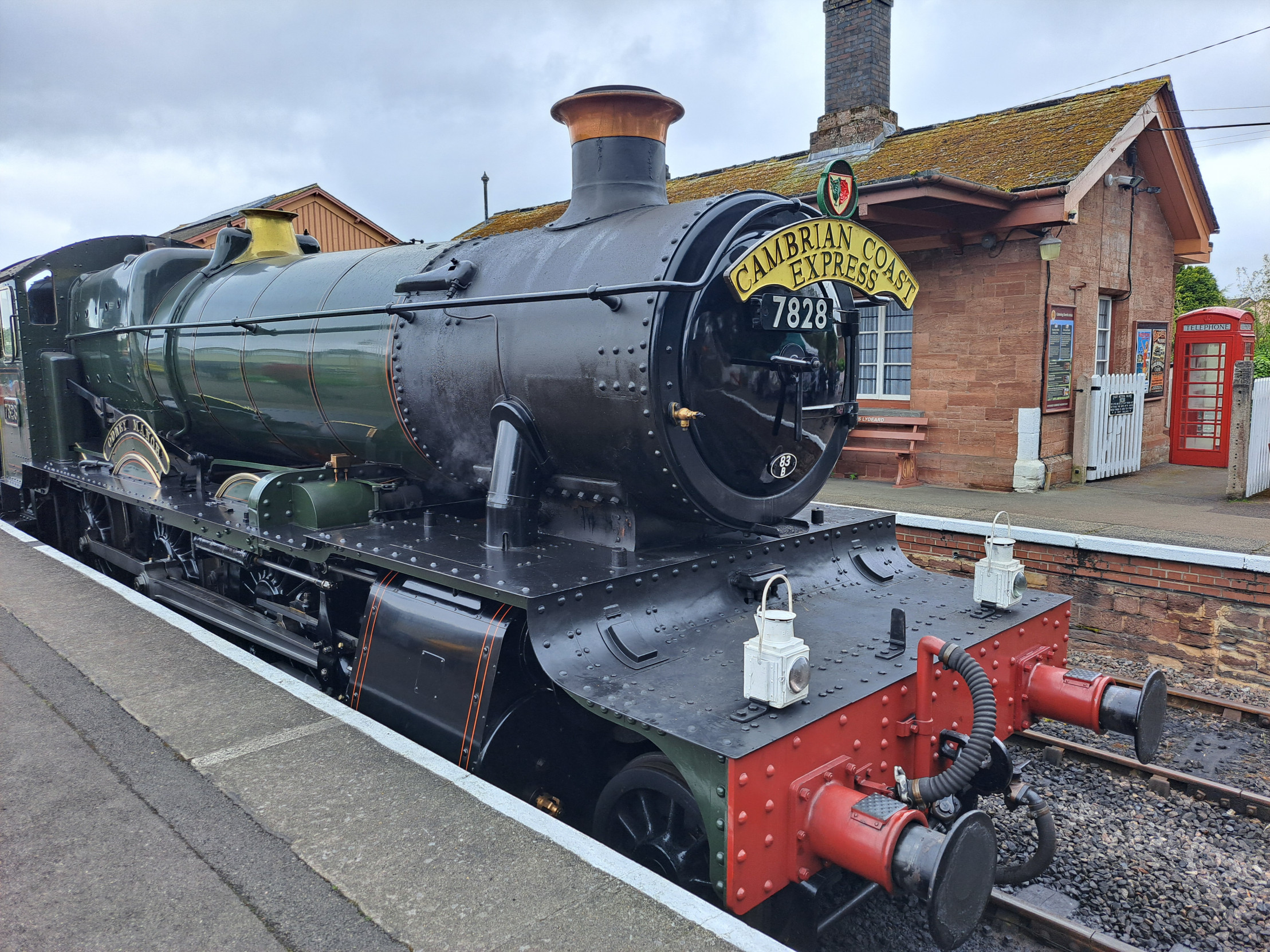
Back in May, my father and I went to a steam railway gala at the West Somerset Railway, a heritage steam railway in - you guessed it - West Somerset! It's actually the longest heritage line in Britain, at over 20 miles long running from Bishop's Lydeard (nr Taunton, the county town of Somerset) to the coastal town of Minehead.
Just imagine how many cups of tea this machine could make! :D This particular engine is Odney Manor, numbered 7828. She's actually quite a modern steam locomotive, built in 1950 by British Railways using a model used by the Great Western Railway before nationalisation. She was withdrawn from service in 1965, before being restored at the Gloucester and Warwickshire Railway in the late 1980s, and making her home at the WSR in 2004.
Hope you enjoy!
Just imagine how many cups of tea this machine could make! :D This particular engine is Odney Manor, numbered 7828. She's actually quite a modern steam locomotive, built in 1950 by British Railways using a model used by the Great Western Railway before nationalisation. She was withdrawn from service in 1965, before being restored at the Gloucester and Warwickshire Railway in the late 1980s, and making her home at the WSR in 2004.
Hope you enjoy!
Category Photography / Still Life
Species Unspecified / Any
Gender Any
Size 2217 x 1662px
File Size 1.15 MB
Listed in Folders
Hah! Perhaps from Caernarfon to Carlisle. ^__^
On a serious point, you've correctly recognised a similarity between the two, because they are related! After the Roman Empire left Britain, the area was settled by Celtic peoples with similar language and culture to the Welsh (from Cymru), through much of the time between 400-1100, it was contested by Celts, Saxons, Vikings, and Scots, until being finally and permanently occupied and settled by England in 1092. Unlike the Welsh, the Cumbric people weren't able to hold onto their language, which is now extinct, but we think it would have sounded a lot like Welsh. :)
On a serious point, you've correctly recognised a similarity between the two, because they are related! After the Roman Empire left Britain, the area was settled by Celtic peoples with similar language and culture to the Welsh (from Cymru), through much of the time between 400-1100, it was contested by Celts, Saxons, Vikings, and Scots, until being finally and permanently occupied and settled by England in 1092. Unlike the Welsh, the Cumbric people weren't able to hold onto their language, which is now extinct, but we think it would have sounded a lot like Welsh. :)

 FA+
FA+












Comments